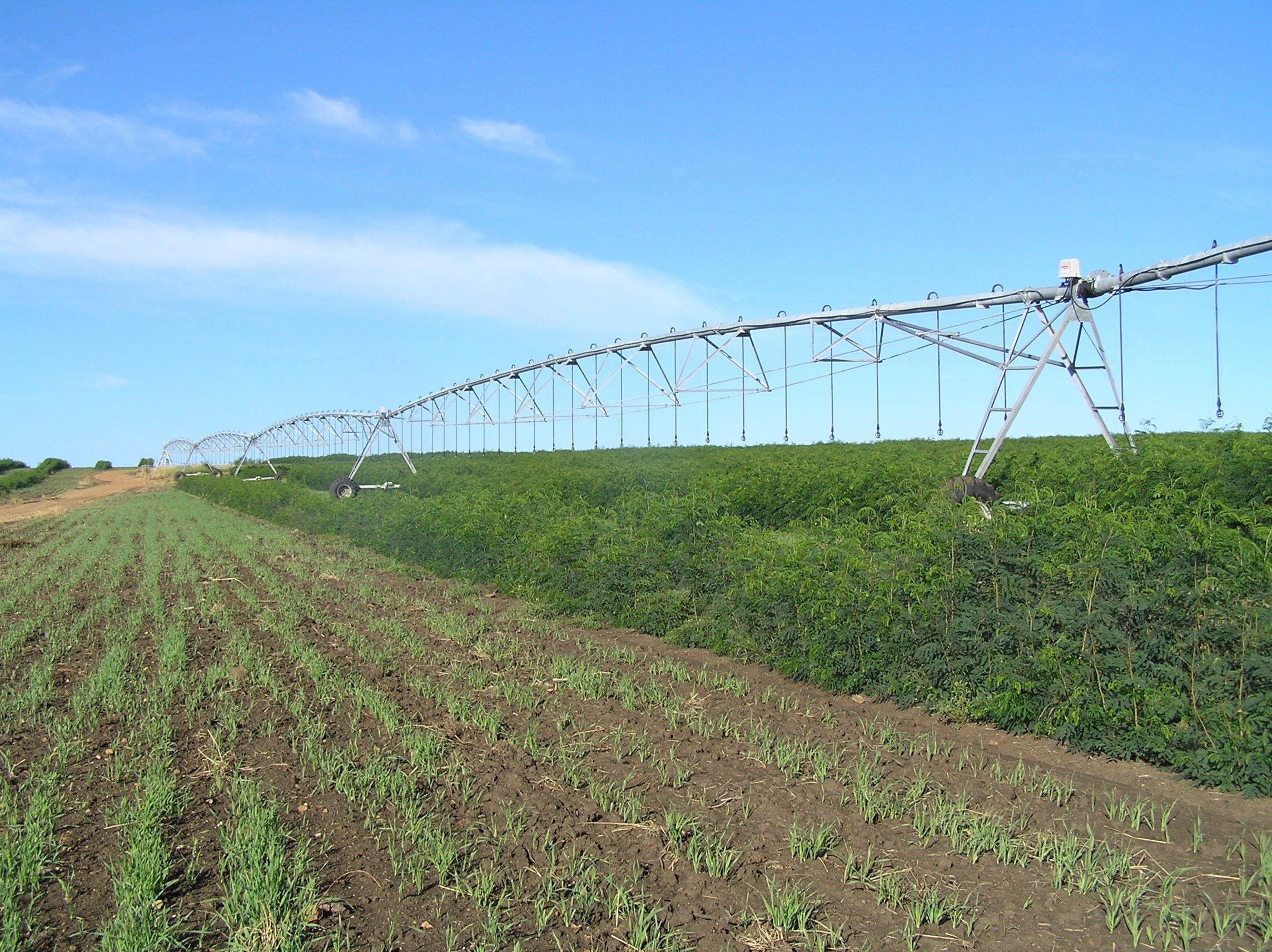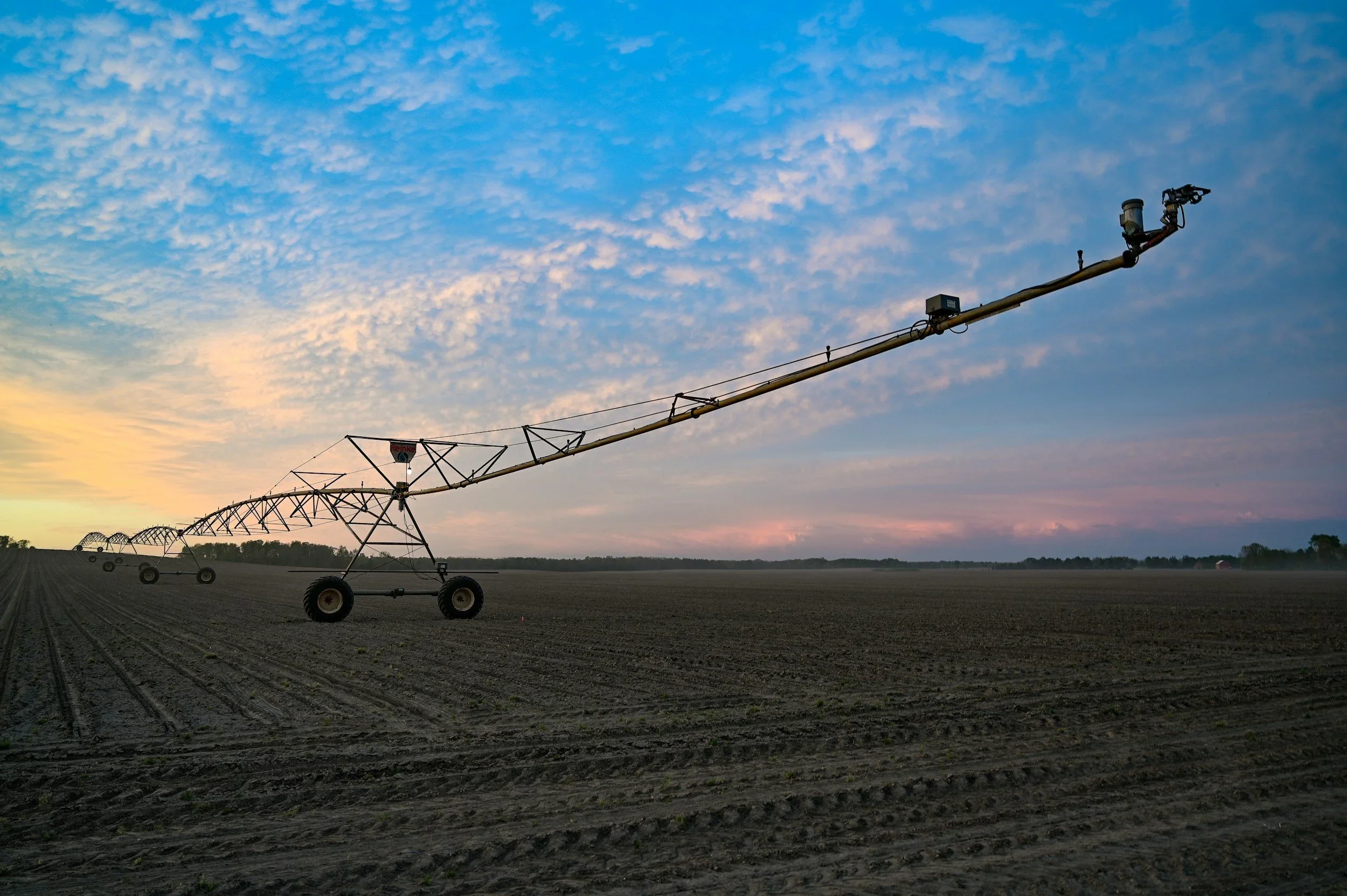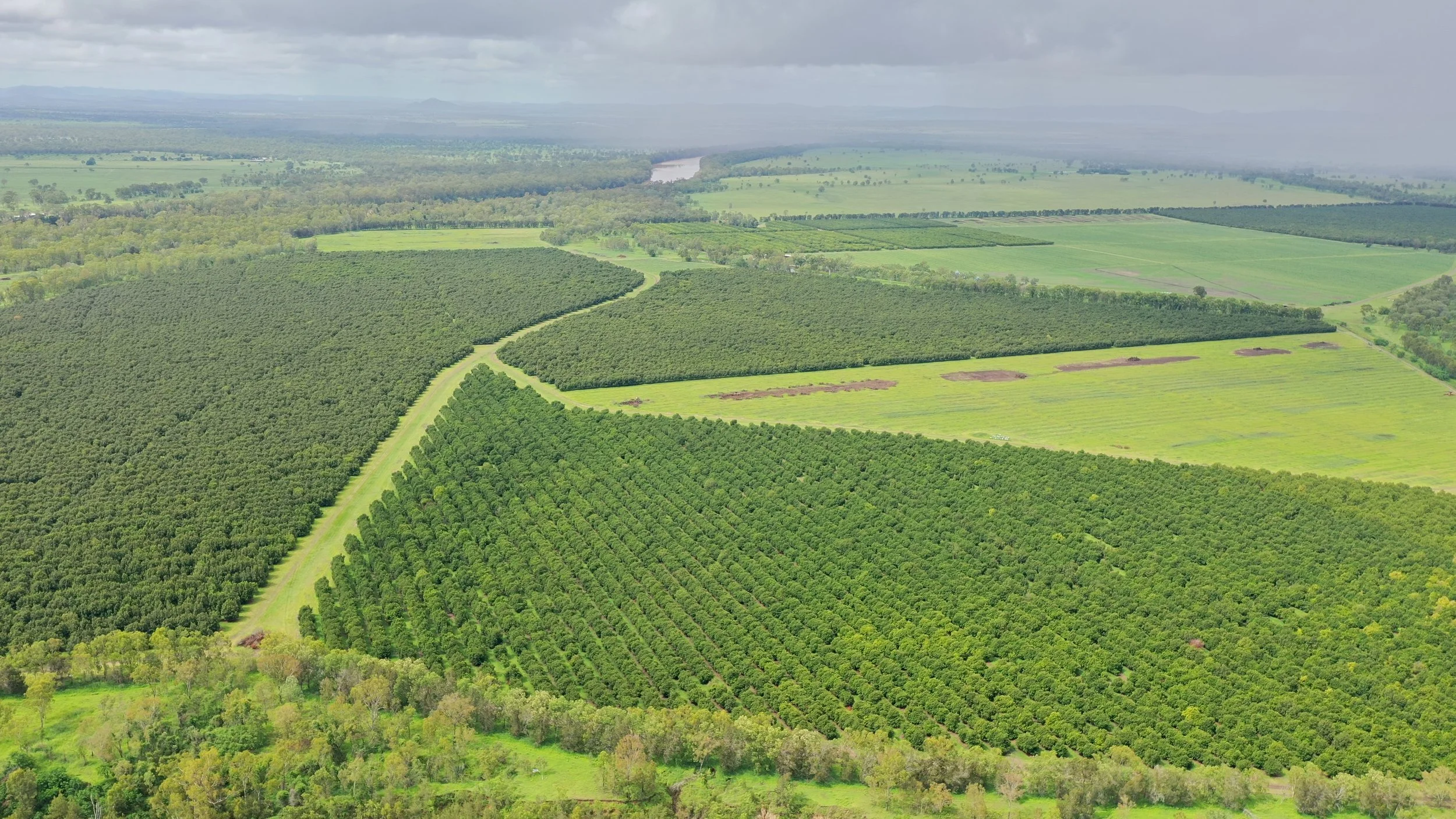
Verterra Projects.
Discover our demonstrated experience.
Coal Seam Gas Water Reuse through Irrigation Feasibility and Design
With planning underway for the staged development of up to 15 coal seam gas (CSG) wells in two Extended Production Test areas, the client sought an economically and environmentally sustainable option to manage the production of up to 1.8ML of highly saline and sodic CSG water per day.
Rather than investing in expensive reverse osmosis or disposal pathways, a beneficial reuse option involving agricultural irrigation trials was proposed. To ensure success, the proposal required in-depth feasibility, design, and regulatory compliance support to assess viability and satisfy a Water Management Strategy and Environmental Authority conditions.
From Effluent to Asset: Supporting Agricultural Reuse through the Wamuran Irrigation Scheme
With the population of the Caboolture River catchment expected to increase by over 100,000 people in the next 20–25 years, Unitywater faced a growing challenge: how to sustainably manage the effluent produced by the South Caboolture Sewage Treatment Plant (STP). Although effluent is A-grade and suitable for a range of non-potable uses, without intervention, the increased nutrient loading could threaten the health of the Caboolture River and downstream waterways.
To address this, Unitywater launched the Wamuran Irrigation Scheme (WIS)—a circular economy initiative to beneficially reuse treated effluent in agriculture. Verterra was appointed to provide deep expertise in agronomy, irrigation, land capability, and environmental planning to help guide the project’s success.
Nature-Based Water Treatment: Integrating Forest and Wetland Systems for Sustainable Effluent Reuse
This client sought an innovative, sustainable, and community-aligned solution for the beneficial reuse of A-grade effluent from a Sewage Treatment Plant, located just 10 km upstream of a major drinking water supply dam. Rather than pursuing a conventional advanced treatment facility, Verterra delivered an award-winning, nature-based solution.
From Failure to Function: Restoring Vegetation on Tailings Dams
Revegetation of mine tailings often relies on a thin soil cover to support vegetation growth. However, these tailings can be chemically and physically hostile to plants—especially when the depth of the cover soil is limited due to resource constraints. Poor vegetation establishment in these areas increases erosion risk and presents ongoing environmental and regulatory challenges, so when revegetation persistently fails, an in depth investigation is required.
Enabling Low-Impact Pumped Hydro with Soil and Erosion Insights
Pumped hydro energy storage is gaining momentum as a critical component of Australia’s renewable energy transition. While environmentally beneficial in operation, their development requires significant infrastructure—such as roads, pipelines, and reservoirs—that can impact soil health, increase erosion risk, and reduce land suitability for agriculture. This case study demonstrates how Verterra approaches risk assessment for these projects.
From Waste to Water: Making Leachate Work for the Land
In regions of Australia where rainfall is unreliable, treated wastewater (effluent) is increasingly recognised as a valuable resource—particularly for irrigating tree crops and other vegetation. However, to safely and effectively reuse effluent for irrigation, its quality must be carefully monitored and managed. This case study demonstrates how Verterra approached successfully undertook risk assessment and development of a management plan that would enable its beneficial reuse for a forest plantation.
Informing Practice Change in Irrigated Landscapes
Northern Australia is considered a high-potential region for expanding irrigated agriculture due to the availability of rainfall and relatively undeveloped land. However, increasing land under irrigation can elevate the risk of sediment, nutrient, and pesticide runoff—particularly into sensitive waterways that feed into the Great Barrier Reef. In this case study, Verterra demonstrates how a thorough understanding of environmental risk is the first step to designing irrigation schemes with minimal off-site impact.
Minimising Soil Risk in Wind Farm Design
As wind energy projects increasingly seek locations that reduce public resistance to visual and noise impacts, forested areas have emerged as preferred sites for development. However, constructing access roads and transmission corridors through these landscapes introduces potential risks to land condition, erosion rates, and future land use, particularly for forestry and agriculture. This case study looks at how these risks can be assessed and managed effectively.
Beneficial Re-use of Biosolids
Verterra is providing an ongoing operational service for managing beneficial reuse of 37,000t/year of biosolids, including transport logistics, crop nutrition, data management and regulatory compliance.
Beneficial Use of Coal Seam Gas Water for Irrigated Forest Plantations
Verterra designed, undertook feasibility studies, assisted with regulatory approvals, developed a stakeholder engagement plan and project managed delivery of 1,250ha of irrigated native eucalypt forest at Fairview and Springwater near Injune on behalf of Santos.
Major Integrated Project: “Wet Tropics People – Setting the Course for the Reef.”
The project focussed specifically on improving water quality from cane and banana farms in the Tully and Johnstone River Catchments.
Fitzroy River Water Quality Improvement Project
Verterra’s largest project to date, providing a novel solution to water quality improvement that combines grazing improvement with ecosystem service market opportunities such as carbon farming and reef credits administered through 3rd parties.
Yandina Creek Wetlands - Monitoring and Revegation
Engaged by Unitywater to monitor vegetation and water quality, remove tidal gates, undertake tidal monitoring, UAV footage and BioCondition monitoring for the Yandina Creek Wetlands for a three-year period.
Grosvenor Subsidence Impact Assessment
Verterra has specific expertise and prior experience in detailed spatial and quantitative impact assessment and analysis of the effect of subsidence. This project, carried out for Anglo American’s Grosvenor Coal Mine, assessed the impact of subsidence on native vegetation.
Lower Burdekin Groundwater Mitigation Strategy
Verterra delivered a well informed and practical guideline that will provide irrigators guidance on how new irrigation developments can achieve net zero impact on the groundwater table and support sustainable growth in the Lower Burdekin Area.
Cape York Timbers Harvest Resource Assessment
CYT engaged Verterra to prepare a Harvest Plan for Running Creek, a property owned by the Lama Lama Land Trust.
Lama Lama Land Trust Forest Management Evaluation
Yintjingga Aboriginal Corporation (Lama Lama Land Trust) completed the first stage of a timber harvesting contract with Cape York Timbers in 2016. Verterra undertook a desktop review followed by a field inspection and evaluation of harvesting undertaken in 2016/17.
Reef Water Quality in Agriculture Developments
Objectives of this project include delivery of a South Yaamba Reef Water Quality Precinct Plan to provide support to the South Yaamba area and to selected landholders in the broader Fitzroy Food Bowl who are progressing irrigation developments on their land to achieve reef water quality outcomes (reduce sediment, pesticide, and nutrient export).
Landholder Engagement Agribusiness
As part of the Rookwood Weir water release tendering process, Verterra worked closely with 10 landholders to prepare Agriculture Development plans and Business plans to assist landholders evaluate their development options and enable them to bid for new water allocations.
Mt Wickham Gully Rehabilitation
Innovative Design and operational delivery over two phases of alluvial gully rehabilitation at th Mt Wickham property, 38km WNW of Collinsville aimed at erosion control, and water quality improvements from significant reduction of fine sediment loss to regional waterways that directly impact the Great Barrier Reef Lagoon with ecosystem stresses, including to inshore reef and seagrass beds.




















